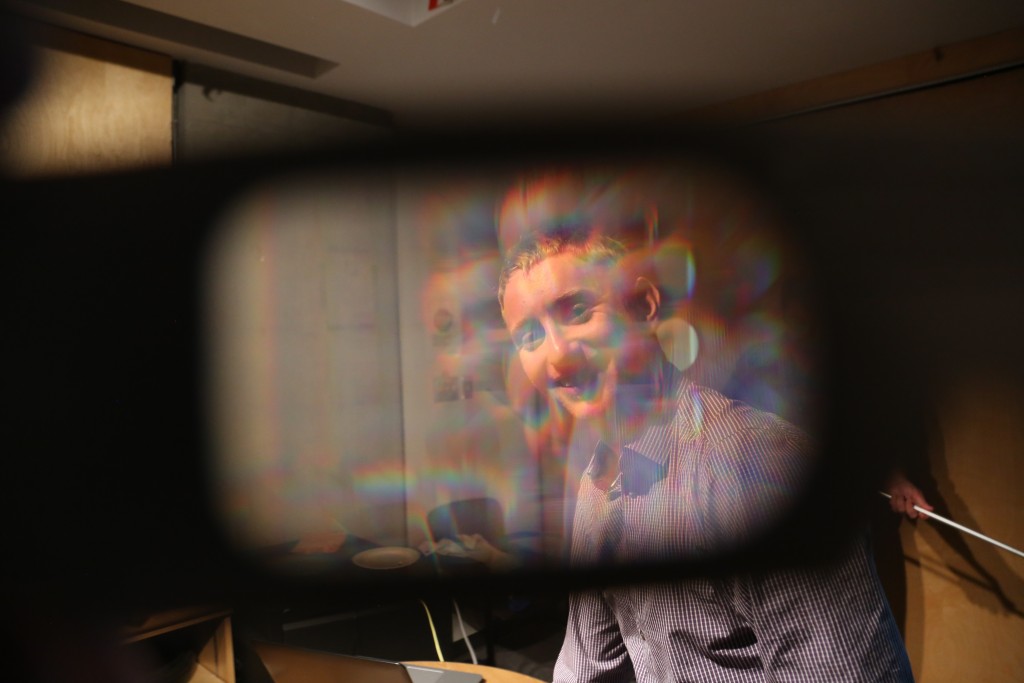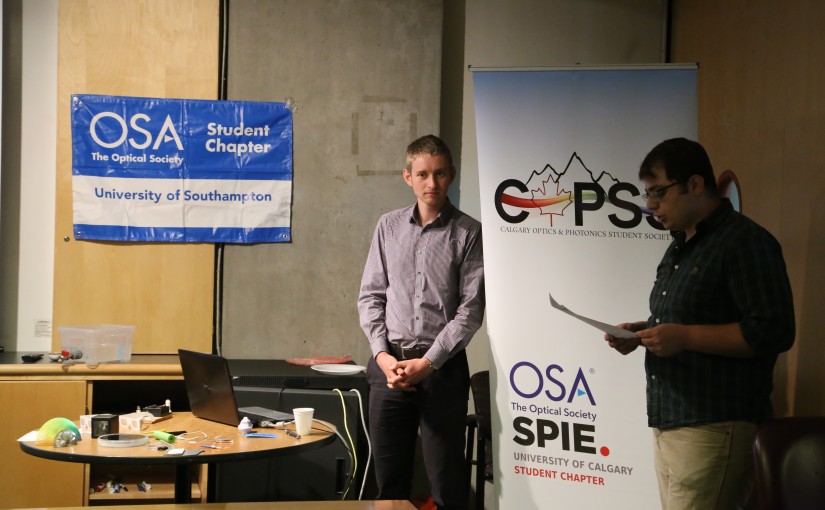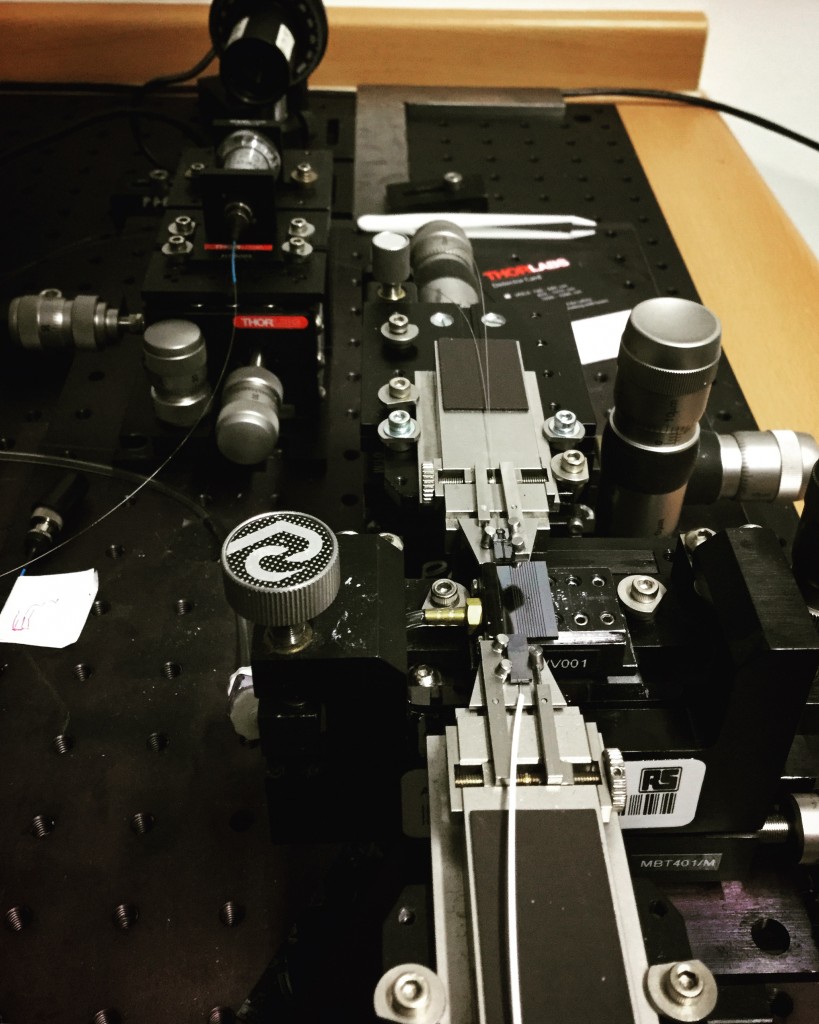I made it to Calgary. It was a fantastic road trip. The last few days of it were spent between mountains, lakes and my laptop, enjoying the views and preparing a presentation for a seminar at the University of Calgary for its Optics and Photonics Society (COPSS) . COPSS are excellent hosts, and all pictures herein at courtesy of Linhui Yu.
My talk was on my research and life as a PhD student in the University of Southampton’s Optoelectronics Research Centre. The audience was really engaging, and had lots of questions for me. We talked about my experience as a student in Southampton, and I presented some of the work that I’ve done as President of Southampton’s Optics and Photonics Society.
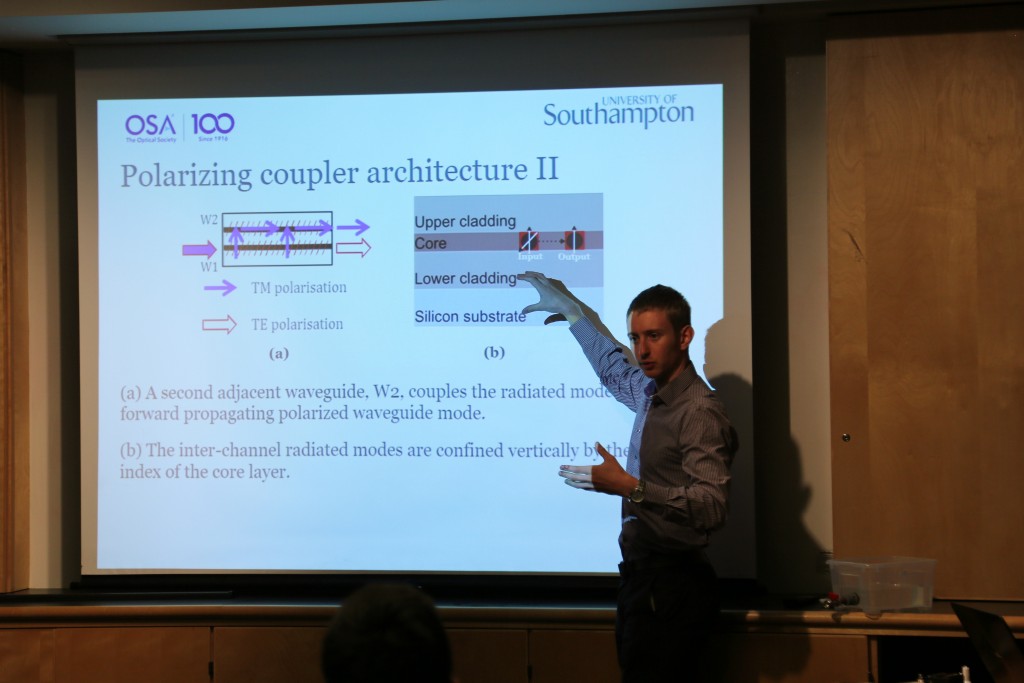
I run a small workshop using the outreach kit that I am travelling with. Part of the kit features samples to explain the research that we do in Southampton, that are made with the fabrication tools that are available in Southampton. In this picture I am talking about a hollow-core fibre preform that was 3D printed by Lieke van Putten as part of her PhD research.
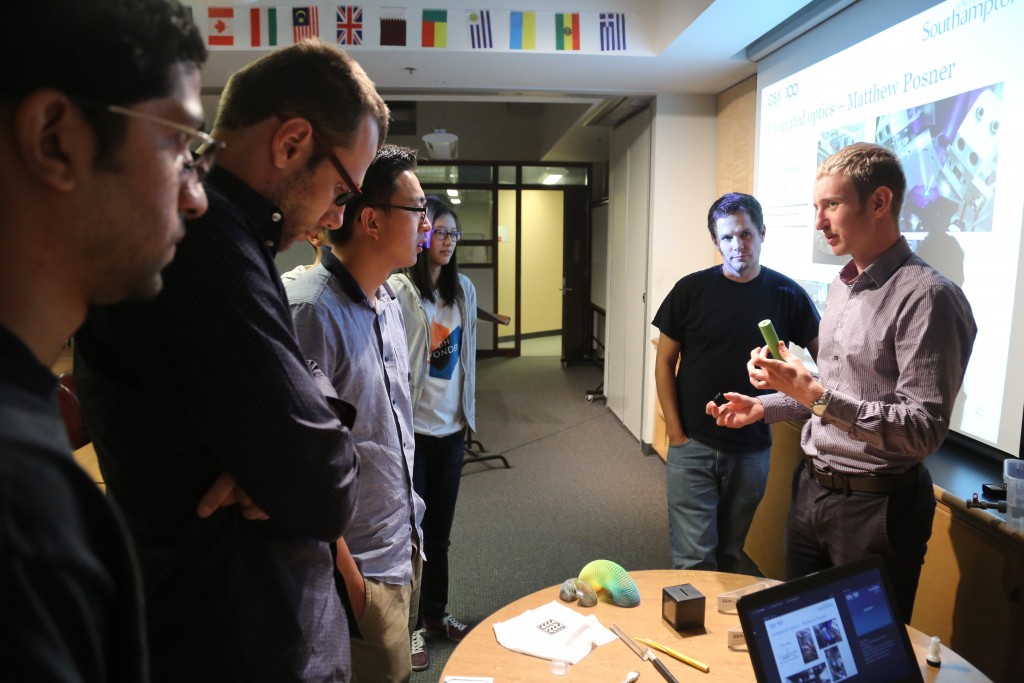
I had the chance to visit research labs. There’s some really cool work going on in the Electrical Engineering department for developing new systems for the optical imaging of the brain.
I also visited 3 labs in the physics departments, where they were doing some mind-blowing quantum physics experiments, including, but not limited to, magneto-optical trapping (Alexander Lvosky, and team), quantum repeaters for long-haul telecommunications systems (Wolfgang Tittel, and team), and nanoscale optomechanics (Paul Barclay, and team).
A big thanks to Chris Healey for facilitating my visit through the physics department.
Finally, a bit of science. I really like this picture. It was taken through diffraction glasses. These are sheets of plastic with 1000s of parallel lines that split all of the colours of light by diffraction. I’ve handed out hundreds of these glasses in science fairs, exhibitions, garden shows, etc. and people love them! They are really useful to grab people’s attention and serve as a great ice-breaker at the start of any conversation.
